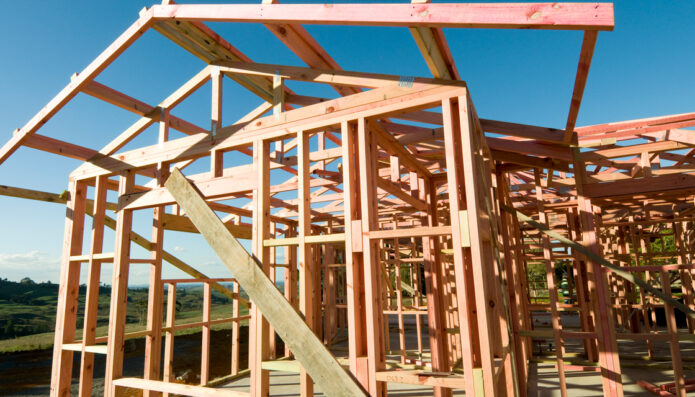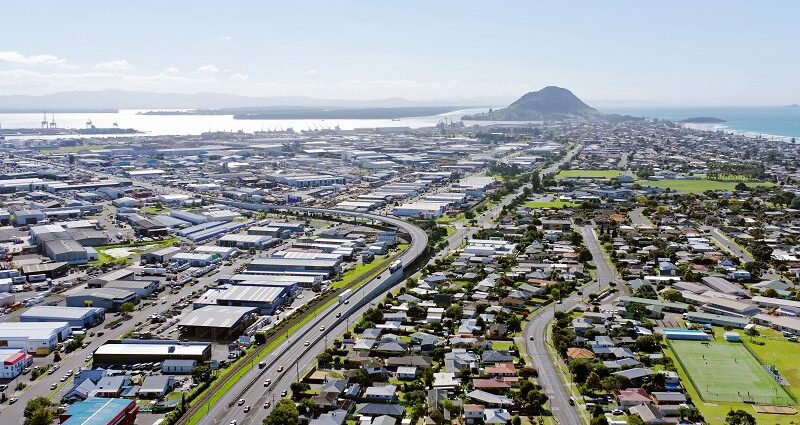PHOTO: QV House Price Index | Mount Maunganui, New Zealand
The residential property market’s downward trajectory continues as the end of the year draws near, with home values falling further from January to November than they have in more than 15 years.
The latest QV House Price Index shows homes decreased in value by 2.9% nationally over the three months to the end of November – a slight improvement on the 3.9% quarterly reduction reported at the end of October – with the average value now sitting at $945,568. With one month to go until the start of 2023, that figure is now 10.2% lower, or $107,747 less in real dollar terms, than at the start of 2022.
The latest figures are a stark contrast to the same time last year, when the QV House Price Index showed values had climbed by an average of 25.5% from January to November 2021. In fact, the closest comparable year to this one is 2008, amidst the Global Financial Crisis (GFC), when home values fell by an average of 9% nationally from January to November, and 9.6% total during the calendar year.
QV Chief Operating Officer David Nagel commented: “It’s been a crazy couple of years in real estate with massive growth followed by a pretty significant correction. The last time we saw anything similar to this was after the GFC in 2008, but that was an entirely different kettle of fish to what we’re going through right now. For one thing, the market was behaving in a generally orderly fashion until that point, with gradual, sustainable growth – whereas the growth we saw during the first two years of the COVID-19 pandemic was far from gradual and sustainable.
“Home values increased by nearly 30% nationally in 2021. In 2022, they’ve fallen by less than half that much on average, so there’s clearly still some way to go until we’re back at pre-pandemic levels. Fortunately, our economy hasn’t taken a hit like it did in 2008, so unemployment remains very low – at least for now. Rising interest rates combined with an increase in the cost of living are going to continue to make life tough for many of us – especially the highly leveraged and those who purchased at the peak of the market.”
Of New Zealand’s main urban centres, the largest home value drops so far in 2022 have occurred in Wellington (-18.7%), Palmerston North (-14.5%), Hastings (-12.5%), Auckland (-12.2%), Napier (-12%), Dunedin (-11.5%), Hamilton (-11.3%) and Tauranga (-9.3%). At 5.4%, Queenstown is the only one still showing positive home value growth for the year, with Marlborough (-1.3%), New Plymouth (-2.2%) and Christchurch (-3.3%) the next most resilient.
However, Mr Nagel said the latest QV House Price Index was not all doom and gloom for homeowners, with its rolling three-monthly rate of reduction slowing nationally for the fourth month in a row. Besides Hamilton (-4.4%) and Rotorua (-3.9%), all of the main urban centres showed less negative home value growth on average this month than last. Wellington (-5.2%) saw the largest average decrease this quarter, and Queenstown was once more the only centre to show positive home value growth, albeit at just 1%.
“The average rate of decline continues to slow in the lead-up to Christmas, despite the Reserve Bank’s bumper rise in the Official Cash Rate last month. They’ve signalled further rises to look forward to next year, and with talk of a recession being bandied about now, we can expect further downward pressure on prices well into 2023 before we might eventually see the market bottom out later in the year.”

Auckland
Home values have fallen by an average of 12.2% this year in Auckland with one month still to go.
The largest average declines this calendar year have occurred on the North Shore (-13.3%), in Auckland’s central suburbs (-12.8%), and Waitakere (-12.4%). As of 30 November 2022, Rodney (-7%) has experienced the smallest average decline in 2022.
QV’s most recent figures show the monthly rate of decline has slowed overall in the lead-up to Christmas – from 0.8% in October to 0.5% in December – with the region’s three-monthly rolling average also improving from a 4.4% decline in the October quarter to 3% in the November one.
Local QV valuer Hugh Robson commented: “The Auckland market continues to remain in a lull. With interest rates and living costs still creeping up, many buyers are rethinking or delaying their buying plans, causing the volume of housing sales to fall to its lowest level for more than a decade.”
“The number of new-build homes coming onto the market remains high, as developers complete developments they started in mid-to-late 2021. As a result of the downturn, many developers are currently dropping prices by up to 12-18% in order to avoid being caught holding on to too much stock.”
Northland
Home values continue to fall throughout the Northland region in the lead-up to Christmas.
Residential property values fell by an average of 4.4% in the Kaipara District this quarter, with Whangarei and the Far North also experiencing declines of 1.9% and 1.5% respectively since August. For comparison, the national average decline this quarter was 2.9%.
With one month to go until the end of 2022, values are down 3.4% on average across the Northland region this calendar year, which is significantly better than the national average (-10.2%). The average home is valued at $743,277 in the Far North, $788,847 in Whangarei, and $874,328 in Kaipara.
Tauranga
Home values continue to decline in Tauranga, albeit at a slower rate as we head into summer.
The average home value fell 3.2% to $1,064,116 in the three months to the end of November, which is an improvement on the 5.8% decline recorded in the October quarter. With one month to go, the total decline this year to date is 9.3% on average, which is a little better than the national average decline of 10.2%.
QV property consultant Derek Turnwald said local real estate listing numbers had increased into summer, with open-home attendance also on the increase despite a general lull in demand. “Many prospective buyers are still playing the waiting game, holding off making purchases unless they find the perfect property,” he said.
“Purchasers are taking longer to make up their mind than they have at any time since the pandemic began. Vendors are having to lower their expectations as there is greater room to negotiate prices, and properties with maintenance issues or unconsented work are proving very difficult to sell unless they’re discounted significantly.”
Waikato
The Hamilton housing market’s downward spiral deepened this quarter, with values declining by an average of 4.4%.
That figure is slightly worse than the quarterly decline of 3.9% reported in last month’s QV House Price Index. The city’s average house value is now $817,067, which is precisely 10% lower than the same time last year, and 11.3% lower than at the start of this calendar year.
Across the wider Waikato region, home values are down by an average of 6.9% in 2022 with one month to go. Besides Hamilton, the biggest declines have occurred in Otorohanga (-8.7%), Waikato District (-7.6%), and Waipa (-6%). Only Waitomo has defied this downward trend, recording 2.7% home value growth since 1 January 2022.
Local QV registered valuer Tom Schicker commented: “Real estate agents continue to report longer selling periods with typically a significant gap between vendor expectations and what purchasers are willing to pay. As a result, sales volumes are down month-on-month again and the median house price continues to decrease. Market sentiment remains relatively unchanged.”
“With the Reserve Bank recently announcing an OCR increase of 75 basis points, and signalling that further increases are inevitable, there is going to continue to be downward pressure on prices into the New Year,” Mr Schicker added.
Rotorua
Rotorua may stop just short of posting a double-digit average home value decline for 2022.
With one month to go, the tourist town’s average house value has declined by 9% to $680,572 since 1 January 2022. That includes an average drop of 3.9% in the November quarter, a slight increase on the 3.6% quarterly decline recorded in last month’s QV House Price Index.
Local QV property consultant Derek Turnwald commented: “Demand for residential property remains subdued generally – although it appears to be slightly better in the higher valued suburbs, with lakeside property values remaining strong. Demand for lifestyle properties within the Rotorua district also remains reasonable.”
“First-home buyers have been showing more interest in the local market lately, despite increasing interest rates and difficulties obtaining finance. There are fewer properties listed at the lower end of the property ladder though, with owner-occupiers appearing to hunker down for the foreseeable future. Property investors seem to be waiting for lower prices, Mr Turnwald added.
Taranaki
Taranaki’s housing market has been more resilient than most in 2022.
Residential property values have fallen by an average of 2.2% since the start of this calendar year in New Plymouth, and by an average of 5% in South Taranaki, with Stratford District even posting a small gain of 1.1% on average. That compares to a 10.2% average home value drop nationally in the 11 months to the end of November 2022.
In the most recent quarter, values fell across the region by an average of just 0.4%, compared to a national average decline this quarter of 2.9%.
Hawke’s Bay
Hawkes’s Bay home values continue to slide into 2023.
WIth one month to go, regional residential property values have fallen by an average of 12.1% this calendar year. The largest declines have occurred in Hastings, where the average home has fallen by 12.5% to $806,908, and Napier, which is down 12% to $787,019.
The latest QV figures show this downward trend has eased somewhat in recent times, improving from an average decline in Napier and Hastings of 5.3% and 6% respectively during the October quarter, to a 3.9% average decline in both places this quarter.
Local QV registered valuer Damien Hall commented: “The latest announcement from the Reserve Bank has seen things go pretty quiet around here. Over the last couple of months we’ve seen more properties listed with asking prices. There seems to be little to no interest in properties advertised via tender or negotiation as people struggle to pinpoint where the market is at.
“Properties are taking longer to sell. Some would say it’s a buyers’ market right now but borrowing money is difficult and banks seem to be tightening with those interest rates forecast to increase further throughout 2023.”
“I think we’re starting to see the effects of inflation and now that the word ‘recession’ is floating around it’s really putting a dampener on things. It’s definitely a stark contrast compared to this time last year,” Mr Hall added.
Palmerston North
Palmerston North’s average rate of home value decline has hit 14.5% for the 2022 calendar year with one month to go.
It follows 10 consecutive months of negative home value growth across the city, with the latest QV House Price Index showing the city’s average home value has reduced by 4.4% in the November quarter to $657,707. This represents a marginal improvement on the 5.5% average decline reported for the October quarter.
Local QV registered valuer Olivia Betts commented: “Palmerston North’s average home value has fallen below $660,000, which means overall we’re roughly $120K back off the November 2021 peak. With the recent OCR increase, we continue to see downward price movement with buyers continuing to have plenty of choice. We are seeing this decline in property prices right across the market in all price brackets.”
Wellington
The downturn continues to deepen in Wellington, where home values declined by another 5.2% on average this quarter.
This year could not be much more different from last. The average home value increased by 25.5% last year to $1,086,421. Now it’s down 18.7% to $883,897, with further declines looking like a sure bet with one month still to go in 2022.
QV registered valuer Blake Ngarimu commented: “The end of the fall is still unknown, especially following the Reserve Bank’s most recent hike of the Official Cash Rate. It’s signalled further increases next year, with interest rates likely to follow, which will make servicing a mortgage in the current cost of living crisis even more difficult.”
The latest QV House Price Index shows the biggest declines so far this year have occurred in Hutt City (-22.6%) and Upper Hutt (-22.2%). This was also true of the most recent quarter, with values falling in these two districts by 7.1% and 7.8% respectively since the end of August.
“Sales volumes continue to be sluggish for this time of year, but we are seeing a select amount of first-home buyers trickling back into the market now and snapping up bargains at prices that we would have thought unimaginable a year ago,” Mr Ngarimu added.
Nelson
Nelson’s residential property market continues to dip into Christmas.
According to the latest QV House Price Index, the city’s average home value was $807,497 at the end of November 2022. That figure is 8.9% lower than at the start of the year, and 1.1% lower than three months ago – an improvement on the 3.4% decline recorded over the previous three-month period.
QV Nelson/Marlborough manager Craig Russell said 2022 had seen the residential property market transform into a much more “traditional market”, whereby buyers now have the “luxury of more choice and time to do their due diligence”.
“Realistically priced properties that are well presented or renovated continue to achieve good numbers at open homes. Properties that are overpriced are receiving little interest, with potential purchasers clearly discounting dated homes that are in need of renovation due to rising costs. This is a contrast to last year, when the difference between renovated and unrenovated was much smaller in the scramble to purchase property.”
“There is now more widespread acceptance that home values will continue to slip back for a while yet, and that we may have yet to see the full extent of pressure coming on households due to rising mortgage rates,” he added.
West Coast
The West Coast’s housing market continues to hold its own as the end of the year draws nigh.
Residential property statistics continue to fluctuate month-to-month due to lower-than-usual sales volumes, with the latest QV House Price Index showing a 2.2% increase in average house price across the greater West Coast region in the November quarter. It follows a slight 0.8% decline in the October quarter.
At 1.7% positive home value growth for the calendar year, the West Coast remains the last region in Aotearoa-New Zealand still showing net positive growth in 2022. Whether or not it will end the year in the black remains to be seen once December’s figures are finalised. As of the end of November, the average home value in Buller, Grey District, and Westland is $310,944, $372,926, and $421,428 respectively.
QV’s West Coast manager David Shaw commented: “Good quality homes are continuing to sell quickly within Greymouth and Hokitika, with several sales in the upper value range. The Buller results are less positive, Westport is solid, and sales in Reefton have dried up due to a lack of listings. The lifestyle market is strong with several sales in the upper value range.”
“International visitor numbers are on the increase and the rural sector remains positive, although increased costs for fuel and fertiliser are having an impact,” he added.
Canterbury
The Canterbury housing market’s slow decline continues into summer.
The QV House Price Index for November shows residential property values have fallen back by an average of 1.1% this quarter – a slight improvement on the 1.7% average reduction throughout the October quarter – with the region’s average annual growth rate still sitting positive at 1.1%.
With one month to go, Canterbury home values are down a relatively meagre 1.7% in 2022 compared to a national average decline of 10.2%. They remain in the black for 2022 in Hurunui (2.8%), Waimakariri (3.3%), Ashburton (4.8%), and Timaru (4.9%), with Christchurch (-3.3%) recording the region’s biggest loss this year.
Property values in the Garden City recorded their first annual drop since June 2018, falling 0.7% since November last year to reach a new average of $757,845. It’s the last of Aotearoa New Zealand’s largest cities to do so.
Local QV registered valuer Olivia Brownie commented: “Although sale evidence is proving that the market is still very much in decline, we have further results to show the rate of decline is actually slowing. The Canterbury region is still showing resilience, despite the number of property listings continuing to increase and properties taking longer to sell.
“Quality homes further up the property ladder seem to be maintaining value levels, yet the mid-range family homes seem to be more affected by inflationary pressures, with increasing costs having more of an effect on this larger demographic.”
Dunedin
Dunedin’s residential property market looks set to end the year with a whimper rather than a bang, with home values declining 1.3% in the November quarter.
With one month to go, the city’s negative rate of home value growth in 2022 stands in stark contrast to the 19.6% average growth it experienced throughout 2021. The latest QV House Price Index shows values have dropped by an average of 11.5% in the 11 months to the end of November, down from $725,853 to $642,286.
Local QV registered valuer Rebecca Johnston commented: “The average home value has fallen by 1.2% since last month, while the number of listings on the market continues to increase. As a result, buyers feel like they can take their time in making purchase decisions.”
“There remains very little demand for vacant land with the lag phase between land purchases and new builds starting to be realised, with a residential freestanding dwelling company closing within the last month,” she added.
Queenstown
Queenstown is the exception to the rule once more.
It is the only one of Aotearoa New Zealand’s main centres to show any positive home value growth this quarter – a relatively bullish 1% compared to a national average decline of 2.9%. It marks a small decline from the 2.9% growth QV reported for the three months ending 31 October 2022.
With one month to go, Queenstown home values are 5.4% higher on average than they were at the start of the year, up $87,836 to $1,708,918.
Invercargill
Residential property values continue their downward slide in Invercargill.
The QV House Price Index for November shows the average home value has reduced by 1.3% this quarter to $467,894. With one month to go in the calendar year, that figure is 3.9% lower or $18,821 less than at the start of 2022.
Local QV registered valuer Andrew Ronald said November marked Invercargill’s seventh drop within the last eight months. “There is still much less demand now compared to late 2021 and early this year. This is particularly evident for entry-level housing where there are now limited investors and fewer first-home buyers looking to buy. This is due to difficulties in obtaining suitable finance, and rising interest rates and living costs.”
Provincial centres
With December’s housing figures yet to be finalised, Westland (7.9%) and Mackenzie (6.7%) head a shrinking list of 16 districts across Aotearoa New Zealand that still have net positive home value growth to show for 2022, down from 21 districts at the end of last month. Kawerau (5.9%), Timaru (4.9%) and Ashburton (4.8%) round out the top five provincial centres, with Queenstown (5.4%) the only urban centre to show any positive home value growth this calendar year.
MOST POPULAR
- Auctioneer refuses $500 bid on a house
- Claims about Jacinda Ardern’s wealth
- Real estate agent dumb awards | WATCH
- Sir John reveals what it would take for housing market to ‘really crack’
- Property prices CRASH to see biggest drop in five years
- Mortgage rates ‘with a 7 in front’: Sir John Key unveils 2023 predictions
- How 27-year-old owns four properties | WATCH
- Survivor, people skills and a GUN real estate agent | WATCH
- Yes, dreams do come true! How to become a real estate agent superstar
- Building industry downturn could cost 45,000 jobs as construction halves
























